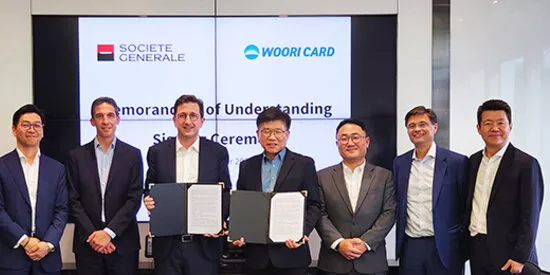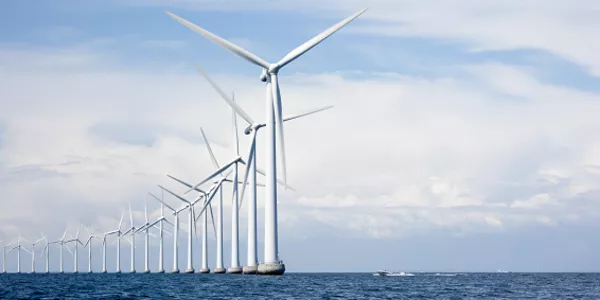
Will offshore wind be a game changer for Japan’s goal of zero carbon emissions by 2050?
“In a country where land can be expensive and scarce, offshore wind can be an accelerator of Japan’s energy transition journey for Japan.”
By Daniel Mallo, Head of Natural Resources & Infrastructure for Asia Pacific, Societe Generale
When Yoshihide Suga was making his first speech as Japan’s new Prime Minister on 26 October 2020, his pledge features a commitment the country would achieve net zero carbon emissions by mid-century: The Japanese government’s first commitment in line with the Paris Agreement’s target of a temperature rise below 2°C above pre-industrial levels by 2050.
Before this announcement the private sectors have put pressure on the country’s renewable energy transition, recommending up to 40% by 2030 which is twice the target the government has announced in October 2020. Amid the growing pressures by business communities, Japan’s alignment with this goal should accelerate the development of renewable energy resources, and offshore wind is set to be an essential component of investment plans for the sector.
Opening the door to offshore wind
Japan has committed to install 10 gigawatts (GW) of offshore wind capacity by 2030 to kick-start a rapid process of expansion toward decarbonising the sector. Most recently, the government announced its further commitment to as much as 45 GW in 2040. The first public auction for a licence to develop one of these sites opened on 24 June 2020 and is related to a sea area off the coast of Goto City, Nagasaki Prefecture. Development companies must submit detailed plans for a floating offshore wind facility on the site, complying with requirements set out in the statute, including financing details. The winner of the auction will be selected by The Ministries of Economy, Trade and Industry (METI) and Land, Infrastructure, Transport and Tourism (MLIT) around June 2021.
This very first step, related to floating offshore wind but with a limited capacity of 20MW, has recently been followed by the launch on 27 November 2020 of the auction process for up to 1.4GW of fixed-bottom offshore wind capacities to be built offshore Akita and Chiba prefectures. This new tender, scheduled to close on 27 May 2021, is the first to target large-scale fixed-bottom foundation projects. It is related to four sea areas: Noshiro, Mitane and Oga; Yurihonjo North; Yurihonjo South; and Choshi.
These additional tenders launched consecutively by both Shinzo Abe and Yoshihide Suga’s administration demonstrate the consistency of the Japanese authorities in supporting the development of offshore wind.
With the world’s seventh-longest coastline and favourable condition for offshore wind market development, a number of issues need to be resolved as this market matures: costs will have to come down, the grid will require adapting, and social and environmental approval processes might have to be streamlined. Capital on the other hand is likely to be readily available for the development of this asset class, with high levels of expected liquidity both on the equity and the debt sides, and among both domestic and international funding sources.
Costs
A key element of the financing is the feed-in tariff (FiT), a mechanism which requires utility companies to buy the electricity generated by the new project at fixed prices set at auction. The feed-in tariff is essential in the early phase of the industry, project developers in particular, as the new facilities will need to obtain some level of revenue certainty in order to justify such large-scale investments.
The first project, Akita & Noshiro, is a great start for the industry: it costs approximately US$ 1 billion for a capacity of 140 MW, which reflects a relatively high level of investment costs, but some initial expenditures had to be incurred just to get the industry under way. Over time these should come down through economies of scale: projects will get bigger and a number of the initial costs will be spread across a larger industry.
The Grid
The second issue to be addressed is curtailment risk, or the grid’s ability to handle the new levels of power output from sizeable offshore wind farms. The transmission infrastructure needs to be able to accommodate hundreds of megawatts of intermittent power that will be generated. Japan’s regional utilities and grid operator will need to co-operate to upgrade the network and manage new demand dynamics associated with wind power.
Curtailment risk is an important consideration for investors, both on the debt and equity sides, and that risk will have to be adequately mitigated. Fortunately, the expertise for this sophisticated risk assessment is available in Japan.
Financing
Financing large, complex and long-term construction projects involves multiple phases in order to initiate and sustain the project from the early development phase until commissioning. It is instructive to compare Japan’s universe of prospective equity investors with those in Taiwan, where we have seen virtually no domestic equity investors: the vast majority of equity capital invested in the sector came from overseas. But Japan has sophisticated equity investors with an existing track record in offshore wind from their involvement in European projects. While international investors will undoubtedly seek to play a role in Japan, it will be important for them to be able to bring added value beyond solely providing additional capital. A specific skillset, direct experience in certain key aspects of the asset class, and the ability to manage complex construction processes could for example by key differentiating factors.
In conclusion, Japan’s initial steps toward offshore wind power development will be a significant catalyst for the country’s progress toward fulfilling its zero carbon emissions goals – and play a leading role in the country’s energy transition. With the collective efforts from the Japanese authorities, private sectors, project developers, investors and banks, Japan could harness the opportunities and become another optimal offshore wind market in Northern Asia.



